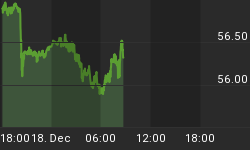In the 1930s, as the world was deep in economic depression, Keynes put forth some ideas on remedying the situation. Before any determination of the effectiveness of those proposals, the Third Reich invaded Poland. With that 1939 event, the second world war was born. While world war did not improve the economic conditions of the world, it did put a lot of people to work.
Not completed evaluated has been whether the ideas of Keynes, and his worshipers, slowed the descent into depression or contributed to further economic lethargy. Keynesians can hardly take credit for the employment created by military drafts and production of war goods. However, since the end of World War II sufficient time has passed for an evaluation of the effectiveness of Keynesian economics. Given the repeated periods of inflation, high unemployment, economic recessions, and wealth destruction, a reasonable conclusion would be Keynesian economics is an abject failure as a tool for establishing the economic policies of a nation.
Now the U.S. government is embarked on a duel path of Peronist populism and more Keynesian mismanagement. A bank tax? The economic collapse of recent times has been exacerbated by the lack of bank capital. If banks do not have adequate capital, they cannot make loans. The bank tax, if enacted, practically insures further economic malaise. This proposal may simply be first of many attempts to distract voters from failures of Obama Regime and Congress before the November 2010 election. Gold may be the only defense for wealth subject to bad economic policies enacted to remedy the previous errors.

Compounding the dismal plight facing the U.S. economy is a Chairman of the Federal Reserve denying that the ineptness of that institution. What will be next bubble and ensuing economic calamity to be brought on by U.S. monetary policy? Might good reasons exist for Chinese criticism of U.S. monetary policy?
Well, we cannot change the inept management of countries like the U.S., Greece, UK, etc. where Keynesian economics has wreaked havoc. We are simply forced to react to the ineptness of that leadership. For that reason, early humans discovered Gold. For as has been said, if we did not have Gold, we would invent it. For Gold to serve us we must buy it, and that effort may be aided by our first chart, above. It is not a new one to these humble writings, but it may again be useful as some encouragement can be found within it.
The green line, using the right axis, is the monthly average price of $Gold. As can be seen on the leading edge, that price has gone flat as the rally has stalled. The rally, dating back to early 2009, seems to have lost steam, as would be expected after such a lengthy period. That has happened despite loud talk of an impending end to the U.S. dollar, and $5,000 Gold being imminent.
Rallies in both Gold and stock markets increasingly look like simply the releveraging of investment funds. Gold and stocks have moved together as funds, using borrowed money again, have bought both. Such a development suggests that they both might move lower in order to keep asset allocations percentages in synch. If one or the other goes down, the other will follow. The VIX is at an extreme reading, suggesting very high complacency toward financial markets. At the same time investor sentiment measures have reached the bullish readings of December 2007, per the latest issue of Barron's. Should the equity markets correct, which is an increasingly likely event, $Gold, as it has its own problems, will likely follow that move to lower prices.
But, as mentioned above, signs of encouragement are developing in that first chart. Red line, using the left axis, in that chart measures the inflationary component of U.S. money supply growth. As the U.S. money supply has not been growing, the inflationary component is negative. That means that U.S. money supply growth rate is depressing U.S. inflation. As can be observed in that chart, such periods are usually associated with unexciting performance for $Gold as is now developing.
When the inflationary component of U.S. money supply growth turns positive that measure gives a buy signal on $Gold. Such events are marked in the chart. While not yet positive that measure is getting less negative, a precondition for turning positive. As the U.S. banking system continues to heal, despite the best efforts of the Obama Regime, that measure should turn positive in the near future. Investors should be accumulating cash with which to buy Gold when that happens.
Investors need to be cautious about being led to conclusions by media reports. Journalists, and most of the people with which they talk, do not know why a market is moving up or down. If the stock markets and $Gold have moved up for no other reason than the releveraging of investment funds, wealth may be at risk if guided by trivial rationales. Recognizing that a top does now exist in $Gold and an important short-term low, about $1,080, has been established should cause us to be more cautious. Holding cash for what may really be last great buying opportunity for $Gold might be wise.
GOLD THOUGHTS come from Ned W. Schmidt,CFA,CEBS as part of a joyous mission to save investors from the financial abyss of paper assets. He is publisher of The Value View Gold Report, monthly, and Trading Thoughts, weekly. To receive these reports, go to http://home.att.net/~nwschmidt/Order_Gold_GETVVGR.html.















